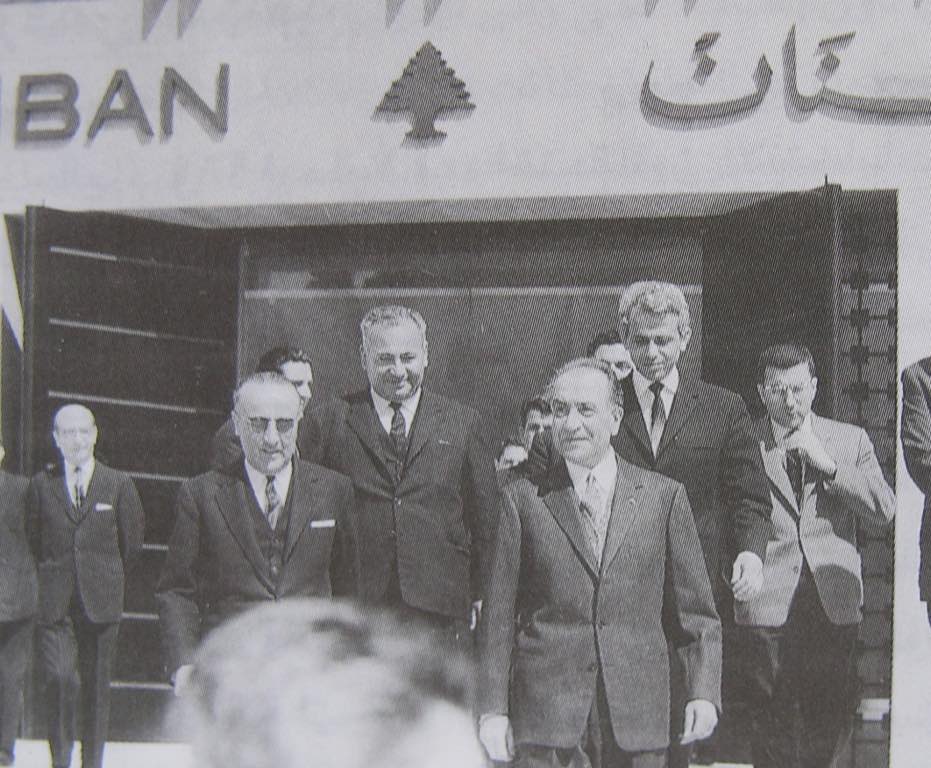Presidency
The 1958 Crisis
The first occasion for General Fouad Chehab to be elected as President presented itself in 1952. That year, following the uprising against President Bechara El Khoury which led to resignation, General Chehab, who was the Army Commander, was named Prime Minister heading a tripartite Cabinet to oversee the elections of a new president. Many politicians supported Chehab as an unchallenged candidate for the Presidency. Faithful to his deep democratic political education, he would not even consider such a possibility. He believed that his primary duty as the Army Commander was to protect Lebanon’s democratic regime and to stand against any military involvement in politics. He was very cautious not to allow Lebanon to be dragged into situations similar to those in the neighboring Arab countries, where army officers took over power, opening the door to a chain of successive military coups.
Four days into his mission as Prime Minister, Chehab had ensured the democratic election of a new president for the country: President Camille Chamoun. Chehab then diligently refocused on his military responsibilities.
In the summer of 1958, the serious division of the Lebanese parties and public between pro-Americans (headed by Chamoun) and pro-Nasser (grouping the majority of Muslim leaders), was manifested in armed clashes in the streets creating a volatile situation and jeopardizing the unity and future of the newly independent state. Like in 1952, during the uprising against President El Khoury, Chehab, still Commander of the Lebanese Army, refused to allow any military interference or intervention; dreading that this would result in dividing the Army. Under his command, the Army protected the presidential palace, prevented any of the fighting factions from taking over strategic locations or institutions, and thus remained united and immune.
As the crisis deepened and the Chamoun mandate neared its end, Chehab represented the only chance to bring back peace to a country facing an existential threat. He was widely trusted for his patriotism and impartiality, and was supported by both the US and Nasser for his integrity. He was, therefore, proposed as the consensus presidential candidate to succeed Chamoun. At first, Chehab refused, for the same reasons that saw him refuse it six years earlier. But when he became convinced that his role would prevent the possible disintegration of the country, he finally accepted this mission. He was elected by the Lebanese Parliament on July 31, 1958.

Rebuilding National Unity
When President Chehab took office on 23 September 1958, the country was still severely divided between a pro-Arab camp, in favor of a rapprochement with Egypt’s Nasser, and a pro-West camp, favoring a rapprochement with the West. Due to the authority and respect that he had gained in his wise leadership of the Army over the years, he succeeded in embodying the role of a judge for the rival factions (especially after the brief ‘counter-uprising’ by Christian groups in October 1958). He formed a National Unity consensus government grouping the main rival politicians. This was the famous four-Minister Cabinet that included Rachid Karame (Prime Minister), Hussein Oueini, Raymond Edde and Pierre Gemayel. It remained in office from 14 October 1958 to 14 May 1960 (It was modified and expanded in October 1959).
On the internal front, Chehab’s guiding principle was the spirit of the National Pact of 1943, the ‘non-written constitution’, which is founded on the art of constantly restructuring consensus at the national level, and ensuring everyone’s participation in government.
At the international level, with regards to Lebanon’s delicate foreign policy challenge, Chehab wisely sought to keep healthy friendly ties with the Western world – most particularly De Gaulle’s France and the Vatican – while assuming Lebanon’s full Arab identity as an active member of the Arab League. He refused to let Lebanon take part in any inter-Arab conflict, encouraging solidarity and ‘brotherhood’ amongst all the Arab countries.
The neighboring United Arab Republic, joining Egypt and Syria and headed by Jamal Abdel Nasser, represented another delicate challenge. Abdel Nasser was the uncontested and highly charismatic Arab leader to whom the Muslim Lebanese public had a special affection, while the Christians looked at him with fear. Chehab succeeded in reassuring Nasser that no hostility against the United Arab Republic would be permitted from the Lebanese territory, and in return he got a clear undertaking from Nasser that Lebanon’s sovereignty, freedom and independence would be respected at all times. This was translated by the famous March 1959 Chehab-Nasser summit held in a tent, right at the Lebanese-Syrian border.
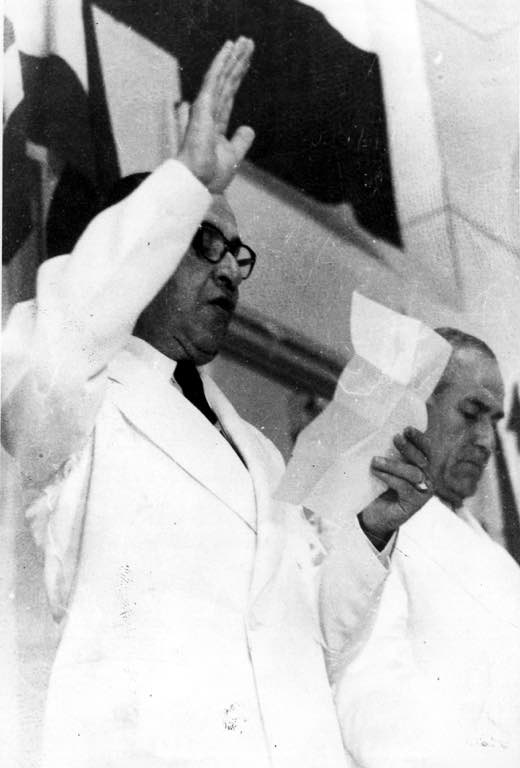
The July 1960 Resignation
A needed step to reinforce stability and completely heal the wounds of the 1958 crisis was to hold new parliamentary elections on a fair democratic basis (the controversial elections of 1957 having been a main reason for the 1958 uprising). In April 1960, a carefully balanced new electoral law was passed by the Parliament paving the way for a fair parliamentary representation. This law tactfully took into consideration all the particularities and needs of the various Lebanese political and confessional textures. (In 2009, almost 50 years later, it was still the fundamental basis used for the ‘fairest’ electoral law!)
In May 1960, a non-political government was formed to conduct the elections, which took place calmly in June.
On 20 July 1960, following these successful democratic parliamentary elections, Chehab presented his resignation and called for new presidential elections, seeing that the country had been stabilized and having paved the way for reforms. He believed that he had accomplished his duty when the country was facing an emergency situation, and that it could then be better led by a civilian. (In her late years, President Chehab’s wife revealed to people close to her a long kept secret: When reluctantly accepting his candidature in 1958, the President had already clearly expressed to her his intention/condition of stepping down after bringing back stability to the country, and thus remain faithful towards the democratic culture that he believed in, which refused military involvement in politics. He had given himself two years to accomplish this mission!)
After a long day of intense debates, that saw the Members of Parliament rally to Chehab’s residence in Jounieh, the MPs succeeded in convincing him to remain in office. He then decided to dedicate the rest of his term to initiate and lead development projects, administrative reforms and state modernization.
In 1961, an attempted military coup by the Syrian Social Nationalist Party was suppressed by the Lebanese Army; and in order to prevent such future threats, Chehab strengthened the Lebanese Army’s intelligence and security services, to forestall foreign interferences in internal affairs and secure the internal equilibrium.
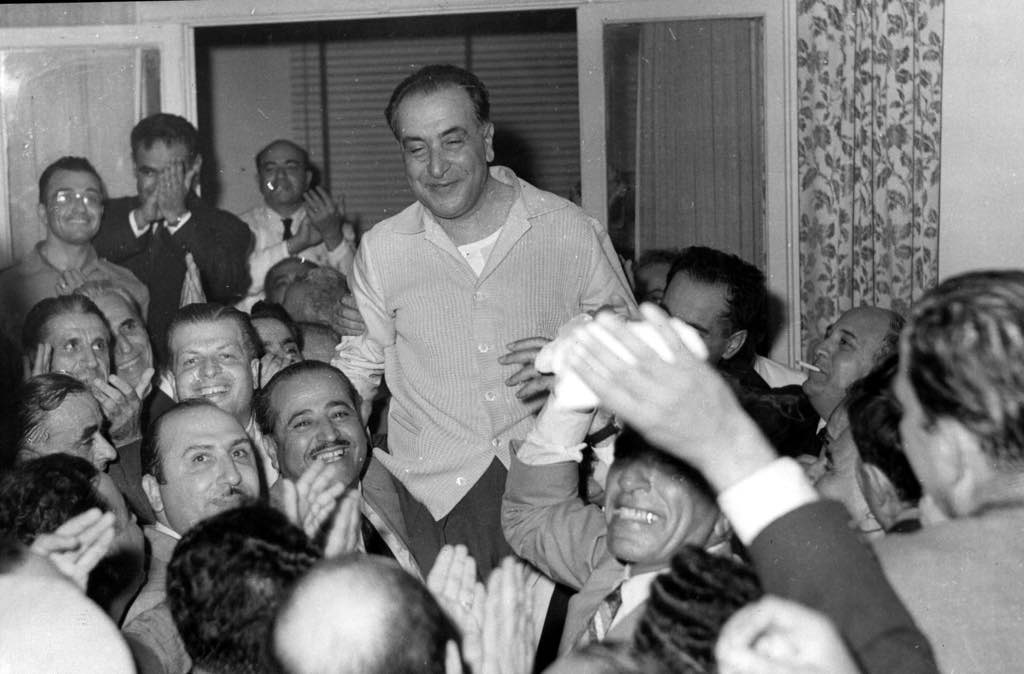
Chehab’s Convictions Regarding the State
During his military career, Chehab had become aware of the poor economic conditions and rudimentary life-style that some of the citizens of his country had been enduring (notably in Akkar, Hermel and South Lebanon). His modest, yet noble native upbringing, his mature Christian faith, and his democratic western education endowed him with a humane approach and sensitivity to social matters, enhanced by the military culture based on values that he imbibed during his studies and trainings in the French Military. Therefore, in his firm conviction, public life had to be approached via its social aspect.
He also knew well through personal experience that the toughest obstacle that would hinder the building of respectable public institutions able to offer security, prosperity, protected rights, equal opportunities and dignity to the citizens, was the mentality inherited from the Ottoman era. This mentality made citizens more prone to rely on feudal and confessional leaders to ensure their needs rather than on the state’s institutions.
President Chehab was convinced that in order to reduce confessional belonging and strengthen the national identity, citizens should have their rights and needs provided and protected by a righteous and efficient state apparatus. President Chehab belief was that “citizens should be first provided with a strong and fair state, and in time they would bond naturally within a unified national identity”. After dedicating the first two years of his mandate to providing peace and security, he could then focus on building a state based on this belief.
During the second part of his mandate (1961-1964), President Chehab kept the same political equilibrium in forming ministerial cabinets, in which the confessional groups were all represented in addition to the introduction of a few new non-political figures into public life like Elias Sarkis and Fouad Boutros.
Saeeb Salam formed two successive cabinets between August 1960 and October 1961; Rachid Karame headed a long-lived Cabinet from October 1961 to February 1964; and the last Cabinet was Hussein Oueini’s election Cabinet, which lasted from February to October 1964.

A Prosperous Period for Lebanon
The Chehab mandate witnessed a restful period for Lebanon, with few scrimmages on the southern border, and a peaceful Lebanese-Syrian border. On the internal front, and aside from the attempted Coup d’Etat by the Syrian National party in 1961, very few security incidents occurred. This provided the country with the right setting, coupled with the many judicious reforms and nationwide development projects, to fuel prosperity on all fronts, and to encourage foreign investments by Arab and Western companies.
All the sectors of Lebanon’s economy flourished during this period, and the country established itself as the center of business and tourism in the Arab world, and as the link between the East and West.
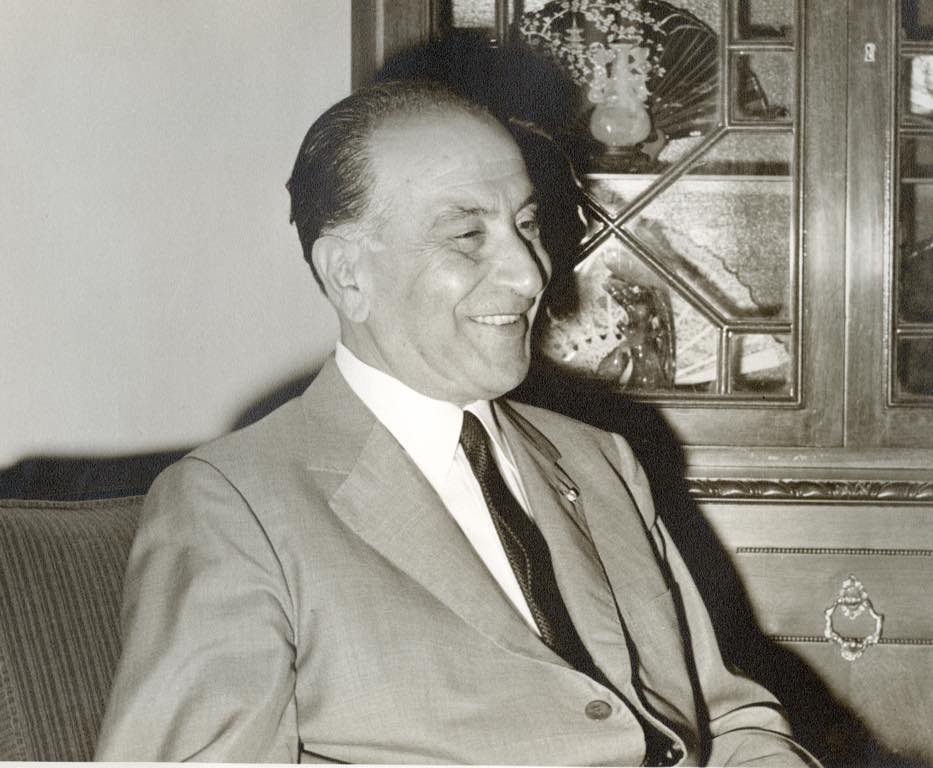
The IRFED Mission
As early as 1959, President Chehab had entrusted Father Lebret from the IRFED Mission (Institut de Recherches et de Formation en vue de Développement) to conduct a large survey on all the country’s human, natural, economic and social capacities and needs, and to propose plans, projects and solutions for the existing social and economic problems.
Father Lebret (French priest and economist) was the director of the IRFED Mission, a world leading institute adopted by the UNESCO and the Vatican for development studies in third world countries. By entrusting such a task to an international institute of experts, Chehab was protecting it from the expected influence of the traditional Lebanese sectarian powers.
The extensive and wholesome report presented by IRFED in 1961 confirmed Chehab’s insight into the fact that underneath the deficiencies of the political system and the confessional conflicts lay serious economic and social problems. In fact, the apparent prosperity in the capital Beirut was masking alarming under-development and poverty in other regions, which strongly lacked basic infrastructure (electricity, water, roads), such as the Bekaa, the Hermel, the North and the South.
Villagers and citizens from the neglected rural areas were moving towards the suburbs of Beirut in search of a better income, creating thus a ‘belt of misery’ around the capital. Huge economic and social gaps were noticed in the country and between the regions, especially at the National Income level.
The IRFED Mission was asked to pursue its work and propose additional solutions to remedy the diagnosed problems and weaknesses. Thus, President Chehab dedicated the remainder of his mandate to initiate various social and economic development projects nation-wide (Beyond Beirut), and to introduce fundamental reforms to the state’s administrative institutions.
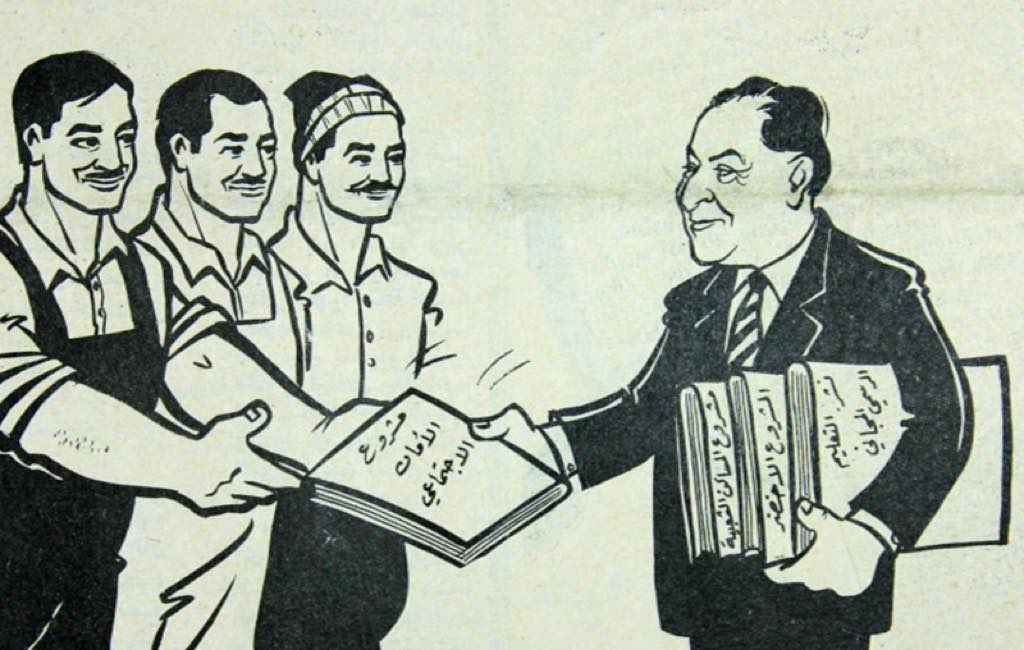
The Mandate’s Development and Reform Achievements
Chehab’s way of bringing change was evolutionary, not revolutionary. He knew that imposing radical changes in a country like Lebanon would simply pave the way to opposing reactions that would become manifest sooner or later. He knew that in-depth change required time for society to get used to it, enjoy its first benefits, and slowly imbibe its principles.
Here is a review of the most important projects and reforms achieved or initiated (as part of long-term plans) during Chehab’s mandate:
On the administrative level:
The Administration suffered from the following: Corruption, feudal alliances of employees, favoritism in nominations and in the services offered, lack of competence, lack of efficiency and primitive equipment.
To address this situation, the Central Inspection Council was created early during the mandate, with the mission to monitor and control the work of government employees, and improve the services provided to the citizens. This was followed by the creation of the Civil Service Board, which handled the nominations, replacements and upgrading of employees on merit basis, imposing university qualifications and entry exams, and replacing the widely spread political favoritism with that of professional merit. The National Institute of Administration was also established to provide training to government employees, enhancing their education and competence. A Cooperative for Government Employees was also created.
The Central Department of Accounts (Diwan al muhasabat) was set, to scrutinize the legal and financial aspects of public procedures and proposed decisions.
A new Municipalities Law, established 380 new municipalities in the various regions; and the powers of the regions’ governors (muhafiz) were broadened to make administrative services less centralized.
On the judiciary level, the Higher Judicial Council, the State Court (Majliss Al Chura) and the Institute of Judicial Studies were restructured.
Chehab’s belief in democratic values and the freedom of the press was firm. To face the poor resistance of the private media to foreign interference, the Ministry of Information was reorganized, with the goal of strengthening the governmental media apparatus.
The Ministry of Planning was also reorganized to meet the requirements of the various development projects and reforms.
On the social and economic level:
As mentioned earlier, social development was perceived by Chehab as the most needed element to strengthen national bonding and improve the citizens’ quality of life. The aim was to create social equality, through an equal,balanced and complementary nation-wide development.
As early as 1959, the Office of Planning and Social Development was established, followed soon after by the National Council for Planning and Development. In 1962, the first National Plan of Development was adopted. Many committees and specialized bodies were formed, and other existing ones were reorganized to enhance modernization and the various development projects and plans. They covered the areas of economy, finance, banking, education, agriculture, industry, construction, tourism, health, social welfare, police and administration. The National Council for Scientific Research was initiated, grouping the best experts in the country and prominent personalities; it was given, like in European countries, an initial role of professional advice in all preparation studies.
The Executive Council for Major Projects was established in line with the one existing in France, and its first projects were not only large-scale constructions (highways, bridges), but also bringing basic infrastructure to the less privileged regions and remote areas. About 1150 villages were thus provided with water, electricity, roads, and schools. The Council undertook also major projects for the Industrial sector. (The number of employees in the Industry sector tripled between 1958 and 1964). The Executive Council for Major Projects in Beirut was also created.
Early in the mandate, the Minimum Wage for employees was significantly raised (From 94 L.L. to 125 L.L.) and a mechanism for readjusting it when needed, was set. A Law for Foreign Workers was issued to organize and regulate foreign hires as well as protect local ones.
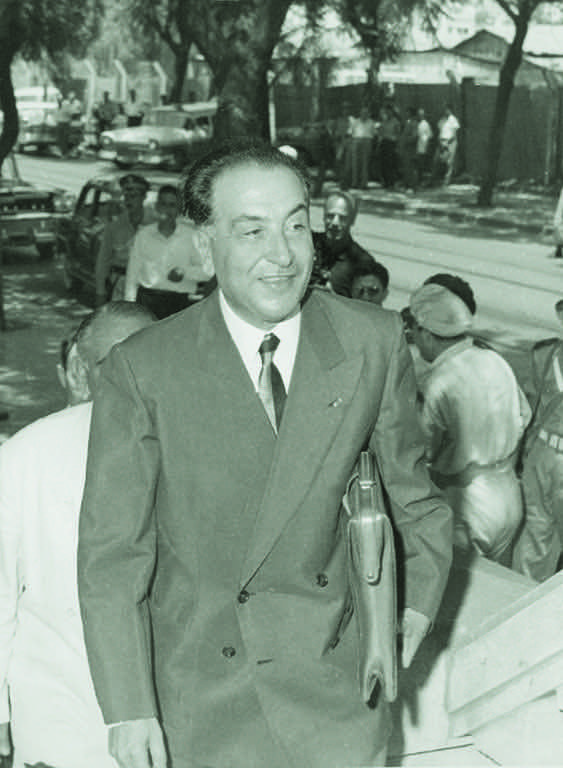
To provide training, social services and support handicraft activities for the rural population, schools, health and social centers were started in the regions. Agricultural training was offered for farmers, and the Office for Fruits and Office for Wheat and Sugar Beet were created to provide farmers with technical support, and help them in packaging, marketing, and the control of international quality and export. A Cooperatives Law was promulgated to encourage solidarity and expenses sharing/saving amongst farmers. (The figures of the country’s exports tripled between 1961 and 1965).
Education was given primary attention, especially in the remote areas. Between 1959 and 1970, the number of students in the South and the Bekaa rose from 64,000 to 225,000 students. A law organizing Higher Education was promulgated, and the Office of Youth and Sports was created. The Lebanese University was expanded, and branches in the following specialization were inaugurated: Law, Political Science, Literature, Sciences and Social Studies.
As per the IRFED Mission recommendations, priority was set on promoting Lebanese Tourism; and the National Council of Tourism was created. Touristic sites were renovated (Jeita grotto, excavations in Saida, Byblos, Tyr, Anjar, Tripoli), rest-areas were built near the sites, and promotion offices were opened in various European, Arab and American cities. (The number of hotels in the country, rose from 245 hotels in 1960, to 339 in 1970)
A very important innovation (fought vehemently by large employers) was the creation of the National Fund of Social Security, which brought financial security and stability for employees, giving them medical covering and the right to indemnities mainly at the end of employment and retirement. A Public Housing Institute was also created.
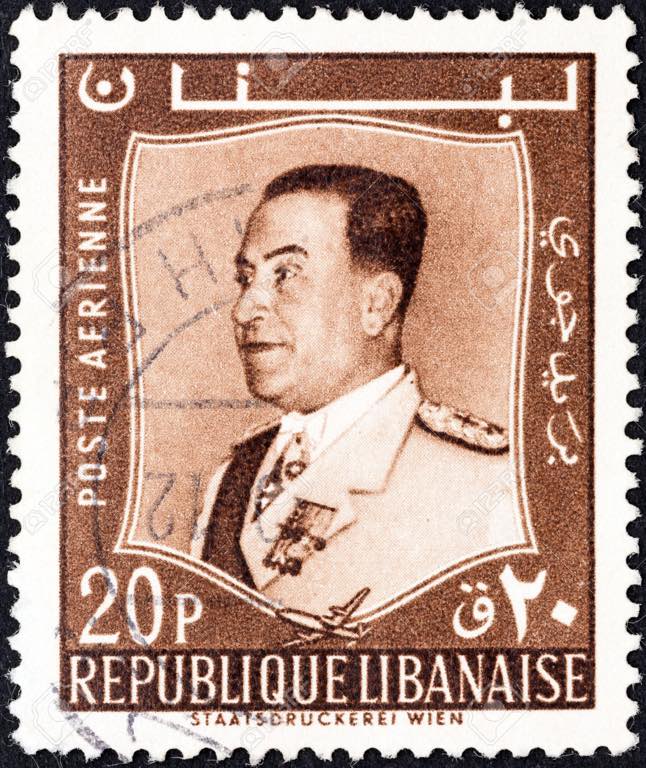
Another major achievement was the new Code of Money and Credit and the creation of the Central Bank of Lebanon to organize the banking and finance sectors (the banking authority was still under the Bank of Lebanon and Syria). These two fundamental projects faced fierce criticism from leading businessmen, who accused them of jeopardizing free economy and bringing forth governmental control. Chehab gave these projects a very high priority and supervised their execution personally.
In the environmental field, The Green Plan project was initiated, and the Litany Project and Qaraoun Dam were completed. The Green Plan offered advice for farmers and long-term credit facilities. It opened new roads, gave prime importance to irrigation facilities (650 new water tanks were built), and distributed a large number of saplings of a variety of trees, and undertook huge forestation campaigns and plans, covering tens of thousands of hectares.
The new Code of Urbanism and the Civil Organization Law aimed at organizing the construction sector and urbanism, and making shelters mandatory. Laws were passed to protect the sea shore and green areas. Small fishing ports were built for the fishermen along the coast.
Finally, major work was done towards expanding the ports of Saida and Tripoli, the third basin of the Port of Beirut was continued, and the work for the Port of Jounieh was set in motion. The Zouk-Faraya and Bickfaya-Kleyaate highways were also executed, as well as roads in the mountains and roads to link the littoral with the Bekaa valley.
It becomes clear from the above list of institutions that, during his presidential mandate, President Chehab succeeded in establishing all the public institutions required to found a state.
He thus established the solid foundations of a modern state, an achievement which remains, to-date, unique in the history of Lebanon. He did so with deep conviction that without a strong and equitable state, there could be no salvation, nor hope to found a true Nation.
